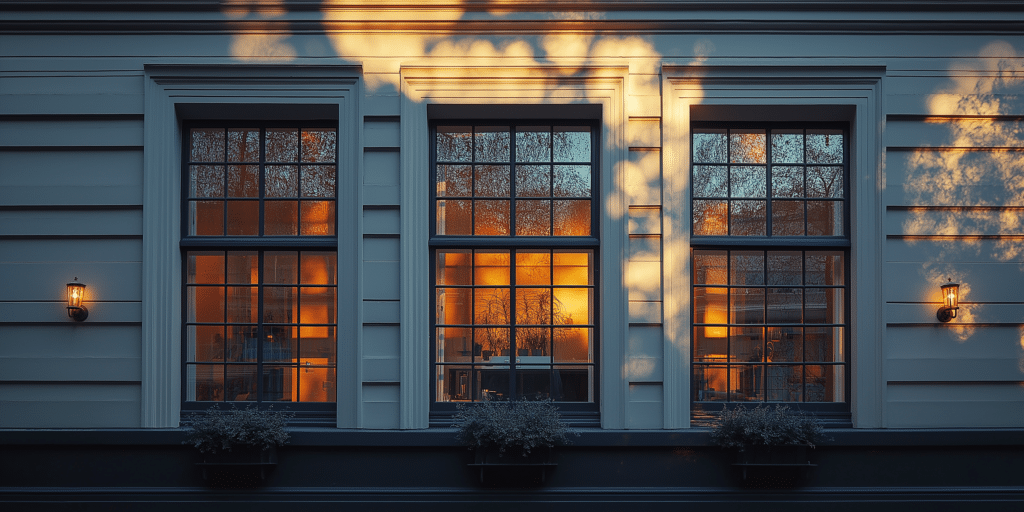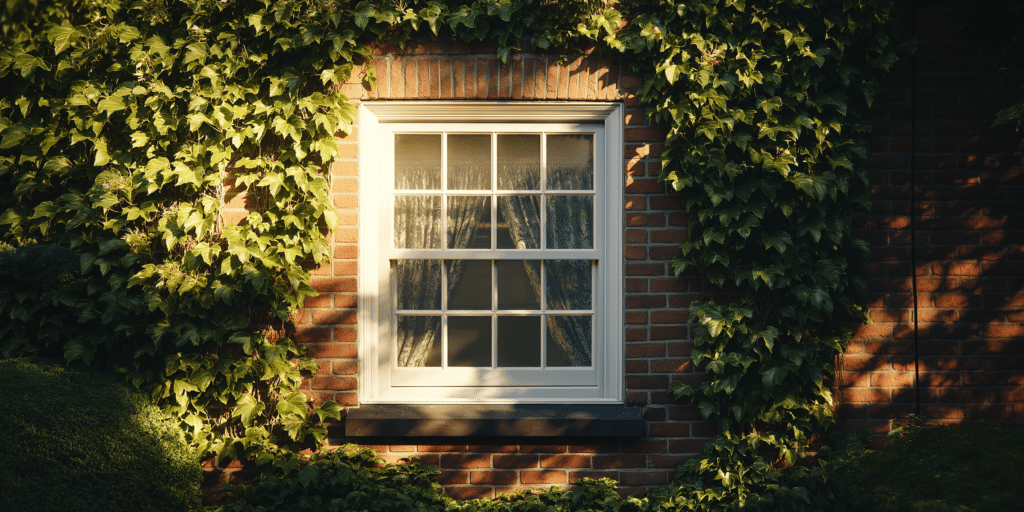Sash Stile End Caps: Essential for Window Longevity and Efficiency

Sash stile end caps are crucial for maintaining your sash windows’ integrity and functionality. These small but vital parts help preserve sash windows’ structural integrity by reducing wear and tear, improving operational smoothness, and boosting energy efficiency. It could be due to damaged or missing sash stile end caps. By providing a protective barrier between the sash and the window frame, these caps ensure that your windows remain operational and insulated for years to come. In this article, we will explore the importance of sash stile end caps, the various materials they are made from, and how they contribute to overall window performance.
What Are Sash Stile End Caps?
Sash stile end caps are small, protective components that fit at the bottom of the window sash. But why are they so important for your windows? These caps serve as a barrier, preventing direct contact between the moving sash and the fixed window frame, thereby reducing friction, wear, and potential damage. Without these end caps, the window sash could suffer from operational issues, such as difficulty opening and closing or increased exposure to weather elements. This could eventually lead to water ingress, rotting timber frames, or inefficient window insulation.
Sash stile end caps are essential for preventing draughts and improving the overall energy efficiency of traditional sash windows. This highlights their crucial role in maintaining insulation and operational smoothness, which is particularly important for older windows.
Sash stile end caps come in various shapes and materials, designed to fit both traditional timber windows and modern uPVC sash windows. The design may vary depending on whether the window is a double-hung or single-hung sash window, but their primary function remains the same: to ensure smooth operation and prolong the life of the window.
How Do Sash Stile End Caps Work?
Have you ever noticed how smoothly your windows glide up and down? That’s largely thanks to the sash stile end caps, which act as a protective interface between the moving sash and the fixed frame. By reducing friction, these caps prevent excessive wear on both the sash and frame, preserving the window’s operational longevity. By protecting the sash from direct contact with the frame, they ensure that the window moves smoothly without scraping or sticking, which could damage the wood or compromise the window’s weatherproofing.
Incorporating properly fitted sash stile end caps can significantly enhance your windows’ aesthetic appeal and durability. This statement underscores the importance of these components’ functional and visual aspects.
Also, sash stile end caps are critical in reducing draughts and improving thermal insulation. They help close gaps that might otherwise allow cold air to seep in, making your home more energy-efficient. These caps are especially important in older windows, as they ensure the window stays functional and sealed despite years of wear and tear.
Materials Used for Sash Stile End Caps

Choosing the right material for your sash stile end caps ensures durability and long-term performance. The material choice affects both the aesthetic and functional aspects of your windows. For example, uPVC sash end caps are popular for their durability, low maintenance requirements, and weather resistance. On the other hand, timber end caps, though more aesthetically suited to heritage sash windows, require regular maintenance to prevent rotting or warping.
The sash stile is a core part of the window’s vertical structure, and modern innovations such as end caps help address issues like water ingress, improving longevity without compromising the traditional aesthetic.
Aluminium is another material commonly used for sash stile end caps due to its strength and lightweight nature. It’s ideal for windows requiring a more robust solution without compromising appearance. Timber, composite materials, and fibreglass are other options, each offering different levels of durability, weather resistance, and energy efficiency.
Benefits of Installing Sash Stile End Caps
These issues may stem from inefficient or damaged end caps. Sash stile end caps not only enhance the structural integrity of your windows by protecting them from wear, but they also improve thermal efficiency by sealing off gaps where air could escape or enter. This helps to maintain a consistent indoor temperature and reduces the strain on your home’s heating and cooling systems.
End caps are often overlooked, but they play an important role in window refurbishment, particularly in preventing wood rot in the stiles, which is a common issue in older sash windows. This shows how they help extend the lifespan of windows, particularly in historic properties.
How to Choose the Right Sash Stile End Caps
When making a decision, it’s essential to consider factors like the type of window (e.g., double-hung, single-hung, or casement), the climate in your area, and the age of your home. UPVC end caps are often the go-to choice for modern properties due to their durability and ease of installation. However, if you have a period property with original sash windows, wooden or brass end caps may be more suitable to preserve the historical appearance of the windows.
The decision to choose end caps is as important as selecting any other window component. Depending on the property’s architectural style, each material has its own unique benefits and challenges.
Another factor to consider is the size and fit of the end caps. If your current sash stile end caps are damaged or worn, measuring your windows accurately is important to ensure a proper fit. Additionally, if your home is in an area with extreme weather conditions, you may opt for materials that offer better weather resistance and insulation.
Installation Process for Sash Stile End Caps

What is involved in the installation process for sash stile end caps? Installing these caps may seem like a straightforward task, but precision is key to ensuring they function properly. The first step is to remove any damaged or worn end caps, making sure the area is clean and free from debris. Typically, you’ll require measuring tape, a screwdriver, adhesive, and the appropriate size and type of end caps for your sash window.
Installing end caps can be relatively simple for DIY enthusiasts as long as you follow the manufacturer’s guidelines and ensure a proper fit. However, if you’re not confident or if the windows are difficult to access, it might be best to hire a professional to ensure correct installation.
A professional installation guarantees that the end caps are correctly aligned, which is critical for preventing long-term damage to the sash frame.
Common Issues with Sash Stile End Caps
One of the most common issues is wear and tear due to frequent use, especially in older windows. This could be due to deteriorating or damaged end caps. These components are often exposed to moisture, dust, and debris, which can cause them to degrade over time.
Historic England states, “Regular maintenance of sash stile end caps is essential, particularly for heritage properties where the deterioration of these components can lead to significant restoration costs.
Another common problem is improper installation. If the end caps are not correctly aligned with the sash and the frame, this can lead to misalignment, making the window challenging to operate and compromising its weatherproofing. Regular inspection and maintenance can help identify and solve these issues before they lead to larger problems, such as rot or frame damage.
Energy Efficiency and Sash Stile End Caps
Inefficient or damaged sash stile end caps may be a contributing factor. These small components play a significant role in reducing draughts and improving the overall insulation of your windows. But how much of an impact can they really have on your home’s energy bills? The answer is substantial: sash stile end caps help prevent heat from escaping, which can lead to noticeable savings on energy costs.
According to Energy Saving Trust, “Upgrading components like sash stile end caps can contribute to reducing household energy bills by up to 10%, particularly in older properties.”
In many homes, particularly older properties, windows account for a significant percentage of heat loss. By ensuring that your sash windows are fitted with high-quality, well-maintained end caps, you can improve their thermal performance, keeping your home warmer in the winter and cooler in the summer.
Historical and Aesthetic Considerations for Sash Stile End Caps

If you live in a heritage property, maintaining the aesthetic integrity of your windows is likely a top priority. Sash stile end caps can help preserve your home’s historical look while providing modern benefits such as improved functionality and energy efficiency. Many manufacturers offer historically accurate replica end caps that blend seamlessly with traditional window designs while offering the durability of modern materials.
RIBA notes, “Choosing historically appropriate materials, even for small components like end caps, helps maintain the architectural character of period properties, especially in conservation areas.”
Choosing the right material can make a significant difference in both the aesthetic and operational efficiency of your windows. For example, while wooden end caps may look authentic, they may require regular maintenance to avoid rot, whereas modern materials like uPVC offer durability and minimal upkeep.
Maintenance Tips for Sash Stile End Caps
Regularly maintaining the sash stile end caps is essential to ensure that your sash windows continue to function smoothly. A thorough inspection at least once a year is recommended, particularly before the colder months when draughts and energy efficiency become more noticeable issues.
According to Historic Scotland, “Routine maintenance of window components, including stile end caps, can prolong the life of sash windows and prevent costly restorations.
Cleaning and lubricating the end caps can prevent wear and ensure they continue to operate effectively. If you notice that your windows are becoming more challenging to open or close, it might be time to replace the end caps. Keeping a close eye on their condition can prevent more significant problems, such as frame misalignment or rot.
Costs and Long-Term Investment in Sash Stile End Caps
The cost varies depending on the material, brand, and complexity of the design. uPVC end caps are the most affordable option, while wooden or brass end caps can be more expensive due to their traditional craftsmanship. However, the initial cost is minimal when compared to the long-term savings you can achieve through improved energy efficiency and window durability.
The Victorian Society comments, “Though traditional materials may carry a higher initial cost, the long-term benefits, including energy savings and historical accuracy, make them a wise investment for period properties.”
Investing in high-quality sash stile end caps can avoid more costly repairs, such as replacing entire window frames or addressing water damage. With proper maintenance, sash stile end caps can last many years, making them a worthwhile investment for both modern and period homes.
Final Thoughts: Enhancing Your Windows with Sash Stile End Caps

Sash stile end caps may be small, but they are crucial to maintaining your windows’ performance and appearance. Whether you’re looking to improve your home’s energy efficiency or preserve the historic charm of your sash windows, installing or upgrading your end caps can have a significant impact. By addressing the issue early, you can avoid more significant repairs down the line and ensure that your windows remain functional and attractive for years to come.
Don’t overlook the small details, like sash stile end caps. These components play an important role in preserving period homes, both in aesthetics and functionality.




